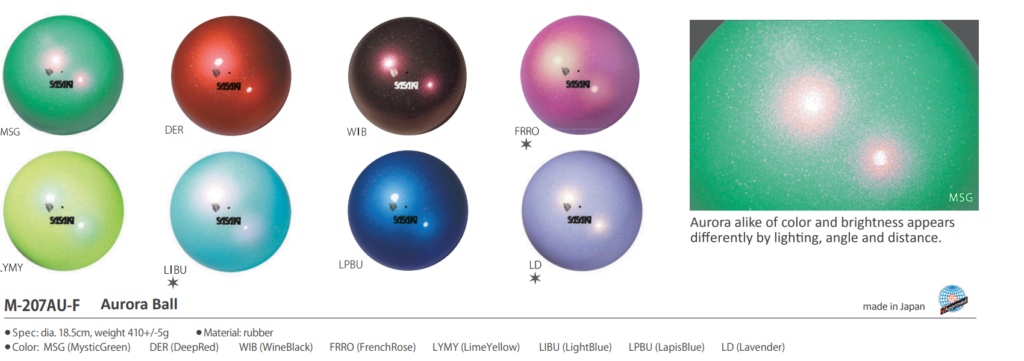How to Choose an Apparatus for Rhythmic Gymnastics. Part 1

In rhythmic gymnastics, each apparatus—hoop, ball, clubs, and ribbon—offers unique challenges and opportunities for technical expression. Whether you’re a beginner gymnast or an experienced competitor, choosing the right apparatus can impact your performance. This guide will help you understand the key features of each rhythmic gymnastics apparatus, so you can make the best choice based on your skill level, goals, and personal preferences.
1. Hoop: Precision and Versatility
The hoop is a circular apparatus that is excellent for building coordination, control, and precision. It is often introduced early in a gymnast’s career because of its manageable weight and the variety of movements it allows, including rolls, rotations, tosses, and catches.
What to Consider:
- Age and Level: Younger gymnasts or beginners often start with smaller, lighter hoops, while advanced gymnasts use regulation-size hoops that match the FIG (International Gymnastics Federation) standards.
- Material: Hoops are made of plastic or synthetic materials, which should be durable enough to withstand high-intensity use. Choose a hoop with a smooth finish to reduce friction during rolls and rotations.
- Size: FIG-approved hoops have a diameter of 80-90 cm, but smaller gymnasts may benefit from a slightly smaller size for ease of control during practice. When choosing the size a gymnast can use a simple rule – the hoop should be at the same level as the top of the pelvis bone. (picture)
For better grip and handling, it’s advisable to wrap the hoop with special tape, which can be purchased at most gymnastics stores. This tape helps prevent unnecessary slipping and provides more secure grip in the hands when performing complex elements.
2. Ball: Grace and Control
The ball is known for its beauty and elegance, emphasizing fluidity and continuous movement. Made of rubber or synthetic materials, it is an essential apparatus for developing a gymnast’s body control, as it often requires maintaining constant contact during rolls, bounces, and balances.
What to Consider:
- Size and Weight: Competition balls are typically 18-20 cm in diameter and weigh about 400 grams. For beginners, smaller balls may be more manageable while they learn the basic skills of rolling and catching.
- Material: The ball should offer good grip without being too sticky. A high-quality rubber or synthetic ball provides the perfect balance of softness and slight bounce, which is crucial for performing smooth rolls and controlled bounces with the rhythmic gymnastics apparatus.
- Grip and Texture: It’s essential to choose a ball that has enough grip to prevent slipping during performances but smooth enough to glide effortlessly during rolls across the body.
The authors choice: Sasaki, M-207AU-F.
This ball is not only visually stunning on the carpet but also provides excellent grip. During critical moments in competition, especially when the hall gets warm, maintaining a secure grip becomes essential. That’s why the ball’s grip is a key factor to consider when choosing the right model among rhythmic gymnastics apparatus.

Discover more insider knowledge with our online courses: COURSES – RG Secrets: Online Platform


